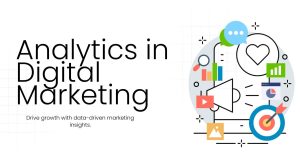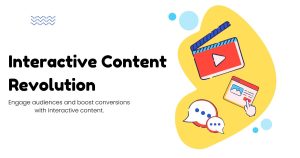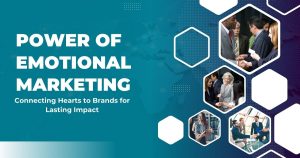What Emotion Sells the Most?

In marketing, emotion is more than a tool—it’s the core of every successful campaign. But if you’re wondering what emotion sells the most, the answer isn’t always what you might expect. It’s not about being loud or dramatic. It’s about connection. That emotional link between a brand and a buyer can make or break a sale.
Let’s explore which emotion holds the most power in marketing and why it continues to drive consumer behavior across all industries.
Understanding Emotional Marketing
Emotional marketing isn’t about tricking people. It’s about understanding them.
Every buying decision is tied to emotion. People might say they’re choosing a product for logical reasons—price, quality, features—but in most cases, those decisions are made emotionally and later justified with logic.
The best marketers know this. They speak to the heart first, and then the mind follows. Understanding which emotion drives sales can reveal how emotional marketing might help solve bigger global challenges.
So, What Emotion Sells the Most?
The emotion that sells the most is fear.
Not fear in the sense of panic or dread, but rather a subtle, internal worry. The fear of missing out. The fear of making the wrong decision. The fear of being left behind.
Fear motivates people to act—and fast. It creates urgency. When done ethically, fear-based marketing triggers decision-making in a way that no other emotion can.
Why Fear Works So Well
Fear is primal. It taps into the oldest parts of our brain—the areas responsible for survival. When something feels uncertain or risky, we’re hardwired to pay attention. This is why fear-based ads often outperform others in engagement and conversion.
Here’s why it works:
-
Fear creates urgency. Limited-time offers, countdown timers, and phrases like “while supplies last” aren’t just gimmicks. They tap into our fear of loss.
-
Fear creates importance. If something might go wrong, we give it more attention. Brands use this to highlight problems their products can solve.
-
Fear demands action. When we fear consequences, we’re more likely to make quick decisions to avoid them.
Examples of Fear in Action
Insurance companies use fear to show what might happen without coverage. Security brands show what could happen if your home isn’t protected. Even beauty and wellness brands use fear—fear of aging, acne, or not fitting in.
But it’s important to note: fear doesn’t mean negativity. The best campaigns use it in a balanced way—pointing out a risk, then offering hope through a solution.
Is Fear Always the Best Emotion?
While fear sells the most in terms of urgency and response, it’s not always the right choice.
Some brands thrive on happiness or trust. Think of Coca-Cola ads filled with smiling faces or Apple’s sense of innovation and community. These emotions create long-term brand loyalty. But when it comes to immediate action—like clicking “buy now” or signing up—fear usually wins.
Balancing Fear with Other Emotions
Using fear on its own can feel manipulative. That’s why great marketers mix fear with relief or security. You show what’s at stake, then introduce your product as the safe, reliable solution.
Example: A cybersecurity company highlights the dangers of data leaks (fear), then promises protection and peace of mind with their service (relief).
This shift from fear to comfort is key. It motivates people to act, but also builds trust.
The Power of FOMO (Fear of Missing Out)
Another form of fear that sells well is FOMO—the fear of missing out. This is widely used in event marketing, product launches, and even social media campaigns.
FOMO makes people feel like they’re on the outside of something special. And nobody wants to be left behind. This drives clicks, shares, and sales at a rapid pace.
Think about phrases like:
-
“Only 3 seats left”
-
“Exclusive offer ends tonight”
-
“Join thousands who already switched”
These simple lines create fear-driven urgency that’s hard to ignore.
Emotion vs. Logic in Sales
Logic rarely drives immediate sales. It supports the decision after the fact.
For instance, someone might buy a luxury watch because it’s beautiful, limited-edition, and associated with success. Later, they’ll say it was a good investment. But the truth? It was an emotional choice. Logic just wrapped it up in a neat explanation.
That’s why emotion—especially fear—is essential in copywriting, branding, and advertising. It opens the door before logic steps in.
Ethical Use of Emotional Marketing
Using fear isn’t about manipulation. It’s about helping people make better, quicker decisions.
The key is honesty.
Don’t create false urgency. Don’t lie about risks. Instead, focus on real concerns your audience already has—and position your offer as the answer.
If you’re ethical and transparent, emotional marketing doesn’t just sell—it builds trust.
How to Apply Fear in Your Campaigns
-
Know your audience’s real fears. What keeps them up at night? What problem do they wish someone would solve?
-
Start with empathy. Show that you understand. Use phrases like “We get it,” or “You’re not alone.”
-
Introduce the consequence. Without being overdramatic, highlight what could go wrong if they don’t take action.
-
Offer the solution. Make it clear that your product or service provides a simple, safe answer.
-
Reinforce with hope. End on a positive note. Show them what life looks like after the problem is solved.
This emotional journey—from concern to comfort—guides the user toward action.
The Long-Term Impact
Fear might get the first sale, but trust keeps customers coming back.
If your message leans on fear, always follow through with great support, high-quality products, and consistent value. The emotion might grab attention, but the experience builds loyalty.
Final Thought
If you’re serious about conversions, ask yourself not just “what am I selling?” but “how does my offer make people feel?”
Because in the end, the answer to what emotion sells the most is simple: fear sells fast—but only when you follow it with confidence.





